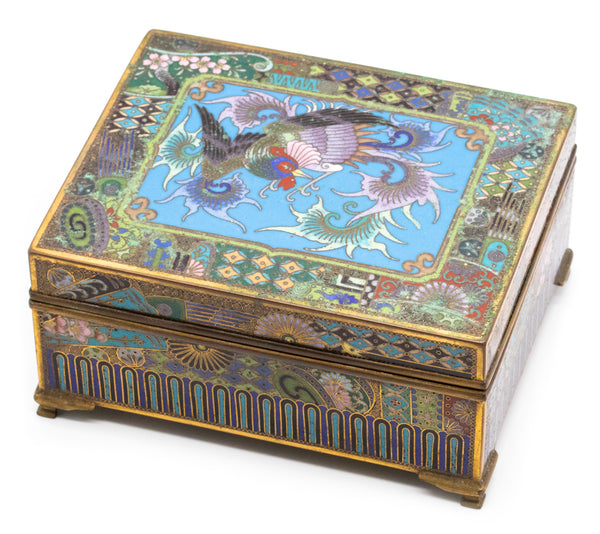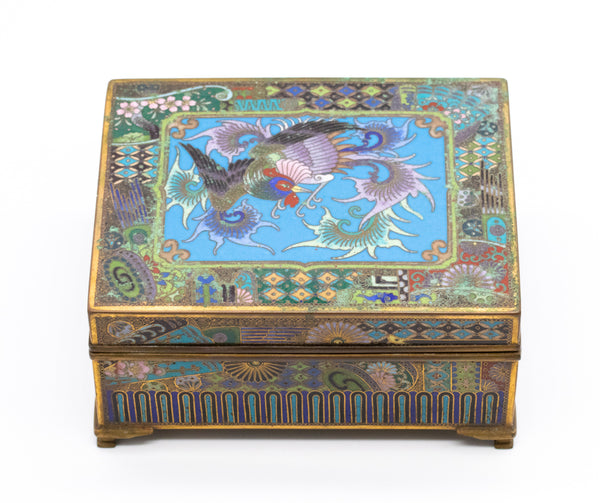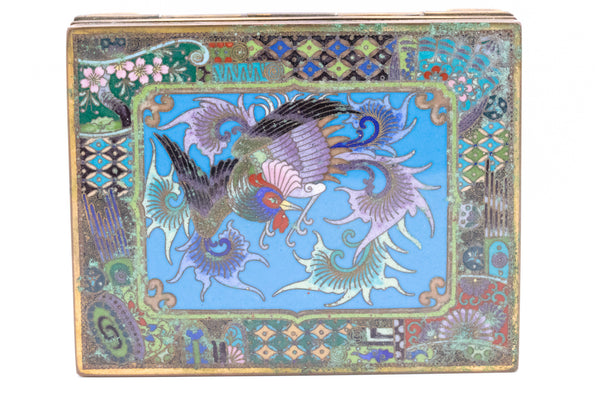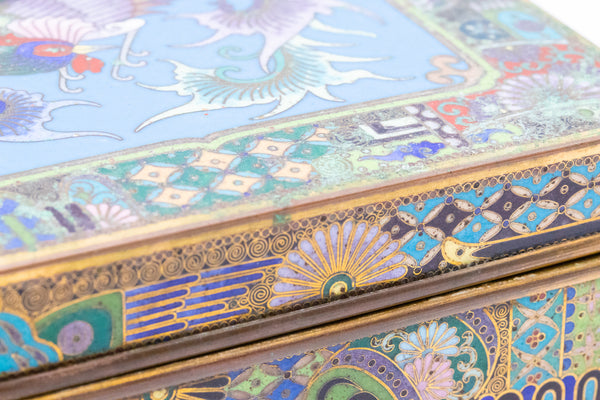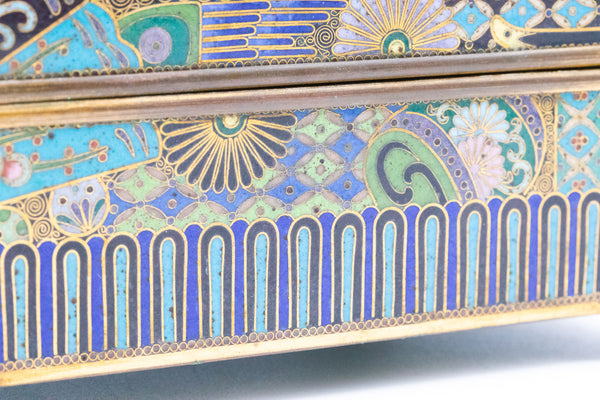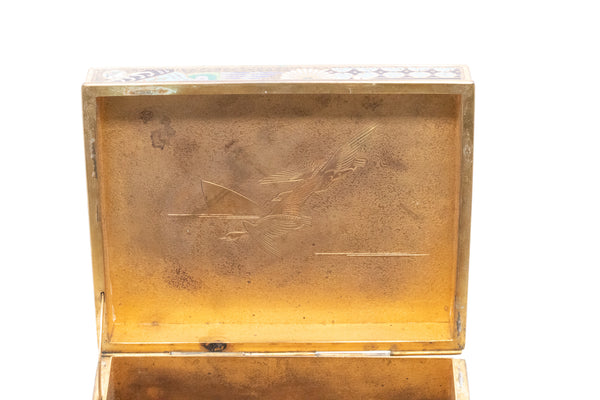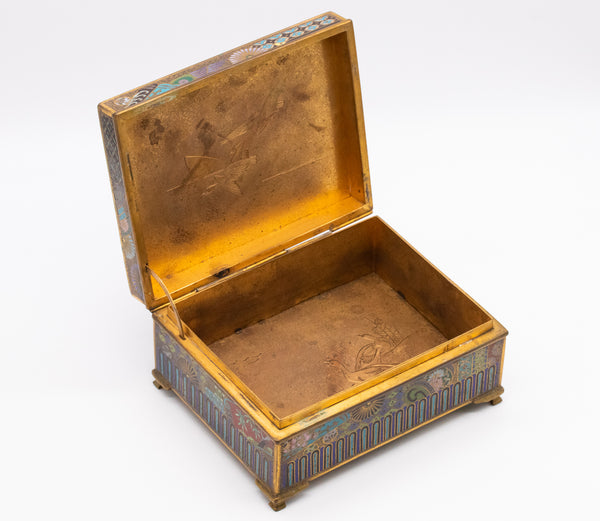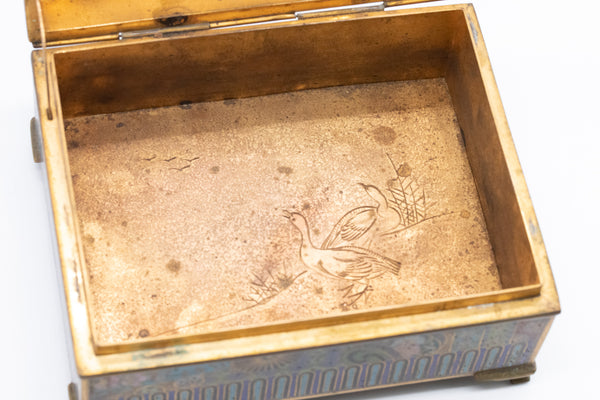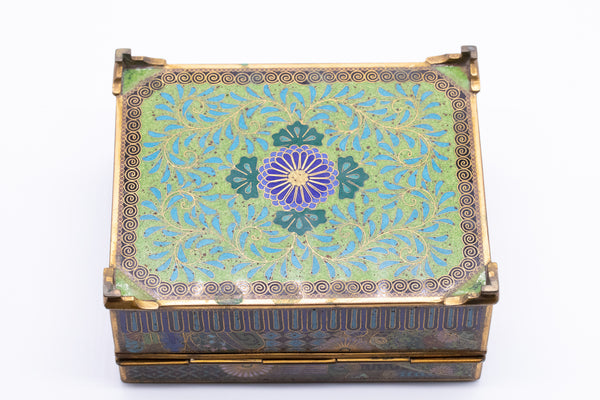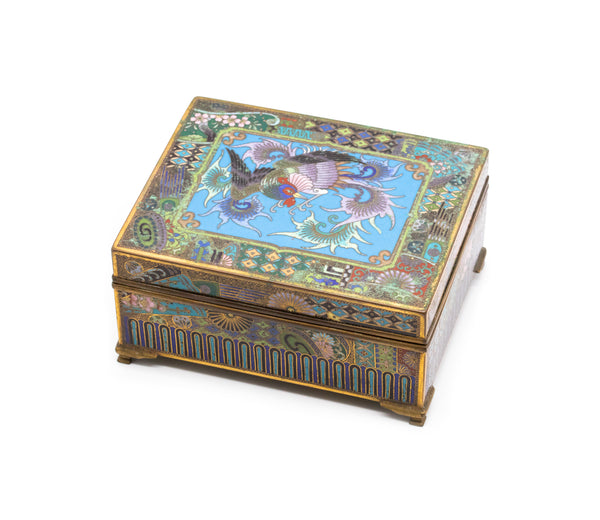JAPAN 1900 MEIJI PERIOD CLOISONNE ENAMELED BRONZE BOX
A BEAUTIFUL CLOISONNE BRONZE BOX WITH A PEACOCK.
CREATED IN JAPAN, DURING THE MEIJI PERIOD (1868-1912), AROUND THE 1900.
IS HAND CRAFTED IN BRONZE WITH A HINGED LID, THE INTERIOR IS FINISHED WITH 24 KARATS GOLD GILDING. TOTALLY EMBELLISHED IN ALL THE SIX SIDES WITH MULTICOLORED CLOISONNE ENAMEL, CREATING AN INTRICATE PATTERN OF JAPANESE GEOMETRIC MOTIFS. THE TOP IS DECORATED WITH A STYLIZED PEACOCK BIRD AND THE BOTTOM DEPICT THE DESIGN OF THE IMPERIAL BLUE CHRYSANTHEMUM FLOWER.
THIS BOX HAVE THE MEASURES OF 4.75 BY 2.25 BY 3.75 Inches.
Cloisonné is an enamelling technique in which the pattern is formed by wires soldered to the surface of the object to be decorated, which is usually made from copper, forming cells or cloisons, each of which holds a single colour of enamel paste which is then fired, and ground and polished. The champleve technique also uses an enamelling technique, but the cells are formed by carving into the surface ot the object, or in the casting. The cloisonne technique has been in use since the 12th century BC in the west, but the technique did not reach China until the 13th or 14th century. It became popular in China in the 18th century. Initially bronze or brass bodies were used, and in the 19th century copper, at which time the quality of th eitems produced began to decline. Chinese cloisonné is the best known enamel cloisonné, though the Japanese produced large quantities from the mid-19th century, of very high technical quality. In the west the cloisonne technique was revived in the mid 19th century following imports from China, and its use continued in the Art Nouveau and Art Deco periods.
IS IN PRETTY EXCELLENT CONDITION WITH NO DENTS OR DAMAGE IN THE ENAMEL.
INVENTORY REF: D0000SNNK/.1111











